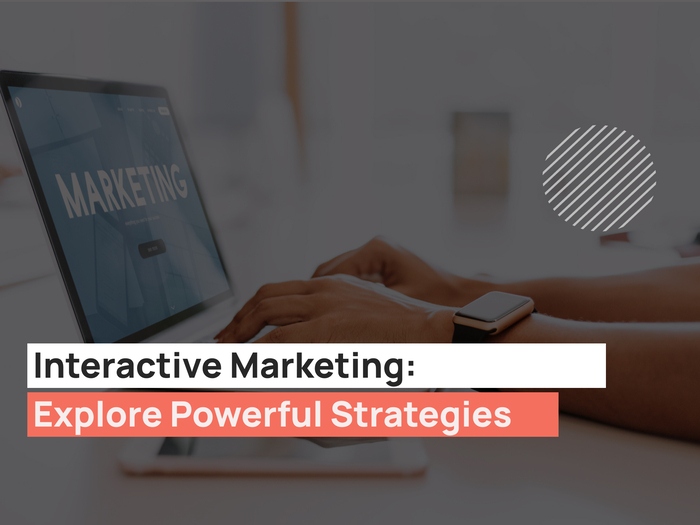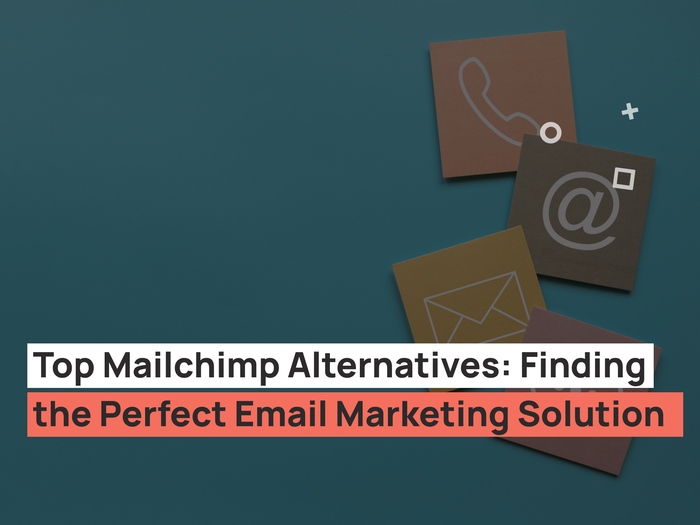Link building is an SEO strategy that marketers use to attract organic traffic to a website. It plays a big part in off-page SEO, and if done right, it increases website visibility and ranking in search engines.
Besides building links, having quality content that offers value to the audience is another ranking factor for Google. Therefore, optimizing a website should be a top priority for marketers.
However, be careful with link building. As a marketer, you need to have linking tips beforehand. In this guide, we will be looking at link building strategies and tools to help you identify quality links for your website.
Whether you’re a beginner or an advanced marketer, the following strategies will work for you.
So, let’s get started!
What Is Link Building?
As marketers, sometimes we tend to overlook the importance of link building in blogs and websites. On-page SEO and content creation are not the only ranking factors on search engines.
Make sure that you also optimize your website for technical and Off-page SEO. As earlier mentioned, link building is part of off-page optimization.
So, for a beginner in content marketing, link building is about creating hyperlinks. It involves building a relationship with another relevant website. That is, linking two websites within the same niche.
Link building is two-way traffic. That is, you either link to a site or other websites link back to you. Link building is also known as backlinks, external or inbound links.
Importance of Link Building
To start with, creating backlinks is a white hat SEO strategy that should not cost you money. You do not have to pay for backlinks.
It is an effective way of earning organic search traffic to your website. It increases the visibility of the website. However, it is not always that easy.
Identifying quality links requires effort and time. You may consider asking for SEO link building services from a digital marketing agency. The importance of creating backlinks is to:
- Increase website ranking on search engines like Bing and Google. The more other websites link to you, this alerts Google that your site content is relevant.
- It increases the organic traffic to your site. Unlike paid traffic, you do not have to allocate a lot of resources. It is a preferred method that saves you money.
- Link building increases ranking for competitive keywords.
- It builds trust as more websites will want to link to you.
If you manage to do it right, you get to benefit from referral traffic. In addition, search engines are able to discover your website pages. Therefore, you should ignore the advantages that come with linking.
This article aims to help you create quality links. So, let’s now look at the tips for effective link building.
Tips For Effective Link Building
As earlier mentioned, link building is time-consuming and not as easy. It is also expensive to search for quality sites that are worth linking to.
So, if you’re not sure of how to implement an effective link building strategy, then we’ve made it easy for you. Check out the tips below:
1. Relevance
Search engines like Google will penalize you if you link to content, site, or page that is not relevant to your website. You cannot link to any content because you feel that it mentions something close to your niche.
Take time and analyze all the available links. Only build links that will add value to your readers. Having irrelevant links will hurt your SEO and ranking on search engines.
2. Website authority
Before you link to a site, begin by checking its authority. Linking to websites with high domain authority can increase your ranking on SERPs.
For example, would you link to a new site with a low domain rating or a website with high authority within your niche? One of the tools to check the domain authority is the smallseo domain authority checker tool.
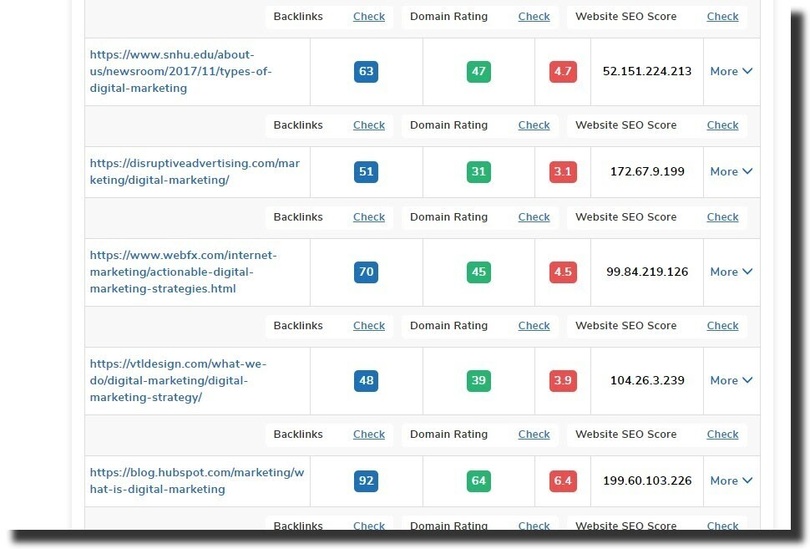
However, this is not mean that you should not link to new sites. Start by analyzing the content of these websites, and if they offer quality content that is worth linking to, you can consider linking to them.
3. Publish linkable content
For other sites to link back, you should also offer quality content. Such content can be infographics, blogs, guides, etc. The content needs to add value to the readers.
With so much content on the internet, creating content that attracts links without requesting takes time and effort. Therefore, as you create content for your pages, it has to meet the user intent and SEO guidelines.
4. Dofollow or Nofollow links
Links are of two types – dofollow and nofollow. They both have an impact on your site and are different. The nofollow links do not allow search engines to follow them.
On the other hand, a follow link allows a search engine to follow and has SEO value. Most marketers recommend using follow links as they increase ranking on SERPs.
However, if you come across high-quality content with nofollow links, this does not mean that you should not link to it. You can consider linking to it as well, but the dofollow link is preferable.
Link Building Strategies To Use In 2021
Before we dive into the strategies, it’s worth noting that Google uses content, links, and PageRank as ranking factors.
PageRank is an algorithm that Google uses to analyze the value of a page by checking the quantity and quality of links to a website. As a marketer, you, therefore, need to identify quality links.
But, how do you identify such links? There are tools to use with link building. We’ll look at them as well. But first, let’s have a look at the strategies to use when creating backlinks.
1. Broken link building
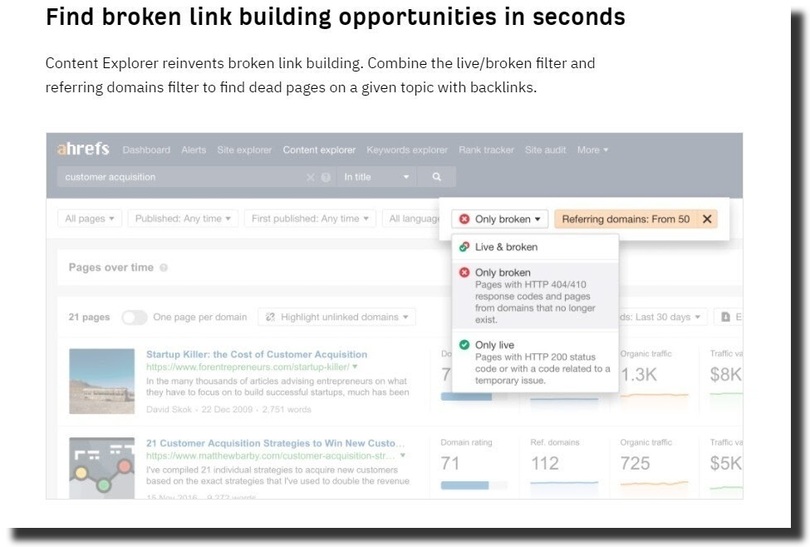
Broken links are a ‘red flag’ to the success of a blog. They increase the bounce rate of a website and affect ranking on search engines. Broken link building is one of the most commonly used strategies when creating links.
To start with, you need to identify websites within your niche that have broken links. If the content on your site matches that of the linking site, you can then reach out to the site owner.
You can email them and let them know that you have similar content and ask them if they are willing to link to you. Make sure that your email makes a promise to the site owner to build trust.
A tool to use to check dead links is Ahref’s broken link checker. It has various features that make it easy for you.
2. Guest Posting/ blogging
Guest blogging is a powerful tool when creating links. As brands continue to embrace blogging, guest blogging is also gaining popularity.
Also known as guest posting, it is a form of content marketing in which an author publishes a blog on another website. There are varying reasons why writers contribute to someone else’s blog.
For this section, we’ll look at backlinks. Here’s how to go about it. Start by identifying a blog that is within your industry or niche. One of the methods to use is to search for the sites on search engines.
Second, create a relationship with the website owner to alert them of your intended goals. List the reasons for your guest blogging and explain how it will help them.
Once you both reach a conclusion, you can proceed to write a post. When it comes to linking, your pages should relate to the blog.
Otherwise, Google will penalize you.
Before you create this content, you need to carry out research first. Do keyword research and study the audience.
3. Resource page link building
Resource pages are websites that link to other web pages that offer high-quality content within your niche. The goal of the page is to add value to the audience.
To get started with resource pages, you need to start by carrying out research. Here’s an example of how you discover useful links from Google: “keyword” + inurl: links.
For instance, if you’re looking for content marketing resource pages, here’s how you’ll conduct this search: “content marketing” + inurl: links.
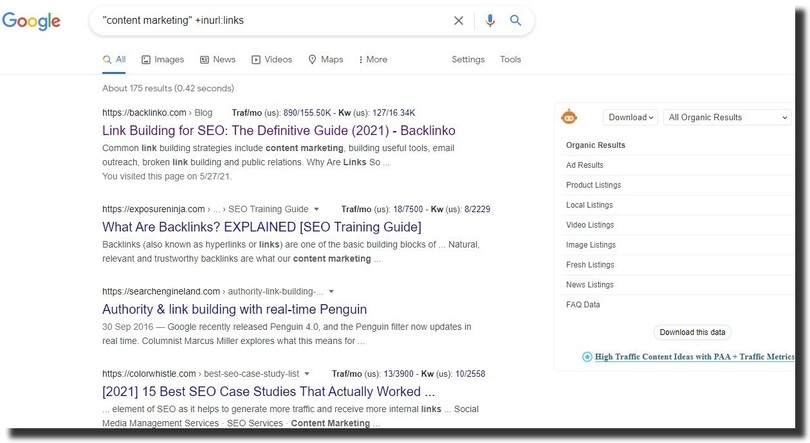
From the results displayed on the search engine results page (SERPs), you can then select the resource pages that work for you. Next, reach out and request the inclusion of your pages.
4. Conduct an outreach
With an outreach, you begin by researching for the pages that are within your industry. Next, reach out to the site owners and ask them to link back to your content.
However, if you do not have a blog, you can link to a relevant page, product, or service on your website. There are several ways to use it when reaching out. The most common one is through email.
For effective outreach, proceed with the most relevant sites. A tool to use to find such links is the Ahref tool. From the backlinks section, explore the listed websites.
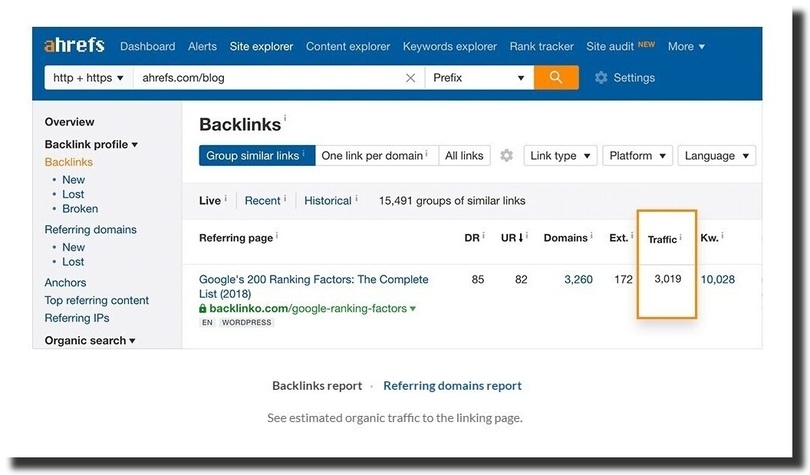
Once you’ve discovered the target pages, the next part is to send personalized messages. When writing the emails, begin by acknowledging the writer’s work before requesting them to link back to you.
5. Publish high-quality content
For other blogs to link back to you, publishing quality content is very important. The best tips to write quality content are using keywords and creating content that meets the user’s intent.
If other blogs within your industry find this content helpful, they are more likely to link without requesting. The use of targeted keywords can improve a client’s ranking on search engines.
6. Replicate your competitor’s backlinks
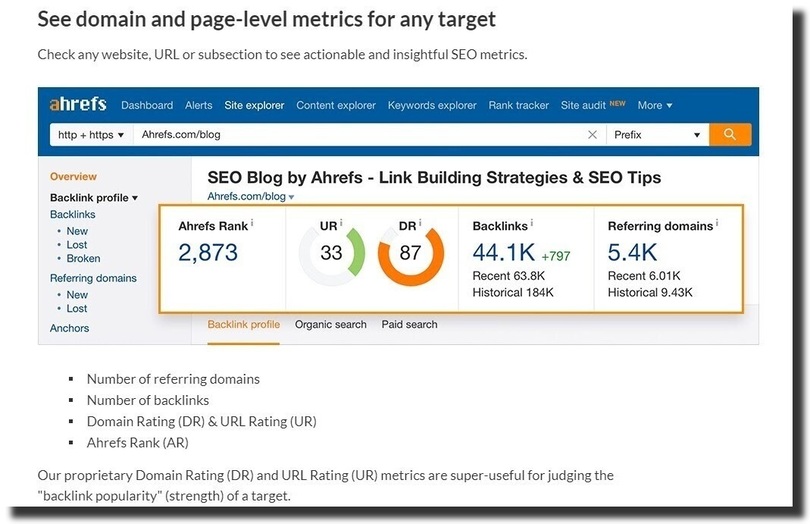
Let’s have a look at an example. Let’s say you’re in the insurance industry. Begin by analyzing the competitors who are performing better than you. It saves you the time and money you would have spent looking for relevant and quality links.
Start by making a list of all backlinks from your competitors’ pages. Analyze the links using tools like SEMrush, Ahref, and SEO Powersuite.
The information you get helps you discover opportunities that can work for you as well. For instance, you can find keywords that work for your competitor, content quality, or topic. By realigning your marketing goals, you can also start attracting other sites to link to you.
7. Make use of social media.
There are currently 3.78 billion users of social media globally. Facebook is the most popular social platform. As a marketer, you need to post your blogs, images, and brand content on the platforms.
With so many social media users, your content is likely to have a higher engagement. Other brands may end up viewing your website content and, as a result, link to your site.
8. Reclaim unlinked mentions
Unlinked mentions mean that your name, product, app, or brand appears on a blog or website, but it does not have a link to your page. It is an easy way of earning backlinks as the website owner is already familiar with your content.
It is not as easy keeping an eye on such websites. With tools like SEMRush or Ahrefs content explorer, they help you discover such websites. Next, reach out to the site owners and begin by acknowledging that they mentioned you on their sites.
Go ahead and request them to leave a link to your pages or mentioned blogs. In addition, you can also ask the sites to link back to a specific page or blog on your website.
Reclaiming unlinked mentions is a quicker method of link building. It is efficient if your client has a higher domain authority within the niche.
9. Reclaim broken links
There are various reasons why you may end up having broken links. Some of them are not within your control. First, the site owner might choose to remove the page.
Secondly, the page link may not be available anymore. The reason being, recent updates on the link URL. So, for instance, your blog URL was ‘Best coffee recipe to try at home in 2019,’ then you change it to ‘coffee recipes for home coffee brewing in 2021.’
It will create a broken link on another website. To resolve this, reach out to the site owner and reclaim the link.
However, if the issue is from your end, you can resolve it and alert the linking of the changes. Google’s webmaster tool helps you identify problems with your site that need fixing.
10. Update content on your website
Updating the content of your website is part of link building in SEO. As earlier mentioned, Google checks the quality of backlinks as well as content when ranking a page.
Analyze which articles on your blog get the most links before creating a strategy to update the content. If you have a page, blog, or infographic with more links than the rest, it means that your content is valuable.
After publishing up-to-date content, reach out to the sites linking to and alert them of the changes.
11. Create content pillar pages
A pillar page covers almost everything about a topic, although the content creator can create more content.
For example, you can cover a topic like a web development, but you break it down into SEO, WordPress SEO, Squarespace plugins, and Shopify plugins.
A pillar page covers a broad topic and may increase referral traffic to your site. If you publish high-quality content on your pages, blog, or website, it has a higher chance of attracting other sites to link to it.
12. Writing testimonials
Did you know that you can earn backlinks from testimonials? Well, if you’re an eCommerce store owner, you can request your customers to give a testimonial on your site.
Also, as a site owner, you can leave a testimonial on another website based on a product or service. With testimonials, a client will leave their remarks, and in return, you get to feature on the website.
13. Building links from the community sites
Examples of community sites are Quora, Reddit, forums, etc. The community sites are part of the link building techniques. From such sites, you can earn high-quality links by taking part in the discussions.
For example, someone may post a question on Reddit, how to improve the overall user experience? If you’re lucky enough to publish content on your website within this niche, you can answer the question and leave a link.
To participate in such community sites, check out pages that attract more answers or engagement. If the questions are within your niche, you can leave a response and link to your website.
14. Increase brand awareness
Having a strong brand presence will attract other sites to link to you. For instance, when it comes to marketing, a well-known brand that quickly comes to mind is Hubspot.
Hubspot is an all-in-one platform that helps to grow businesses. By building a strong brand, other websites will link to you without having to reach out.
As more sites continue to link to you, it increases your search rankings on search engines.
15. Ask other websites to review your products.
Product reviews are a link building strategy for eCommerce websites. For instance, you have a store that deals with kitchenware. You can ask other sites to review your products and leave links to your products.
Amazon is an eCommerce with millions of products. If you have a blog, you can review specific products and publish the blog on our website. However, this method is most effective for affiliate links. In return, the product owner can repost the blog while other blogs may also link to it.
16. Reach out to people and brands you’ve mentioned
As a content creator, you can mention brands and individuals in your blogs. Reach out to the individuals, and let them know about it. It also can earn you backlinks to your content.
That is, if they find your content worth sharing, they can mention you as well and link to your work. In this case, it can work for both of you. Other users who follow such brands may also link back to you.
17. Link building using HARO
HARO (Help A Reporter Out) is a website that journalists use to collect feedback from the public. With this platform, you can feature in a publication within your niche.
To start with, sign up on the platform and choose your category. For example, if you’re in the education sector, you need to select education. It makes it simple for you to identify link opportunities within your industry faster.
HARO is one of the websites that gives you a higher chance to feature in major publications.
18. Create internal links
As part of link building, internal links are essential to the ranking of a page. Internal linking has several benefits. It gives you control over link pages and makes it easy for Google to understand your website content.
In addition to this, internal links create a relationship with other pages. It also makes it easy for other page users to discover the content of your website. Internal linking is part of SEO which increases visibility and ranking.
Link Building Tools
As a marketer, it can be time-consuming to discover high-quality links. Although this does not mean that it is not possible, you can consider using tools to make the process easy and manageable.
These tools are either premium or free. Premium tools give you access to advanced features. Below is a table with the most common link building tools to choose from:
| Link building tool | Price |
| Majestic SEO | Premium but it has a free trial version |
| Ahrefs | premium |
| Moz Link Explorer | Free but has a premium plan of Moz Pro. |
| SEMrush | Premium but each plan has a free trial |
| Buzzstream | premium |
| Screaming Frog | Premium and free version |
| Raven tools | Premium but has a trial plan |
| SEO Sitecheck up | Premium but has a free trial |
| Linkody | Premium |
| Monitor backlinks | Premium but has a free trial |
Final Thoughts,
If you’re not implementing link building, then you’re missing out on SEO. Link building is about creating relationships with other sites that are within your space.
The benefits of link building are organic search traffic, referral traffic, and website visibility. With hyperlinks, visitors can discover your page and link back to you.
With so many link building strategies, you can use one that works best for you. When it comes to building links, aim for quality links. They increase your credibility and increase conversion to your webpage.
Therefore, if you’re not using link building, the tools above will help you implement the various strategies.

